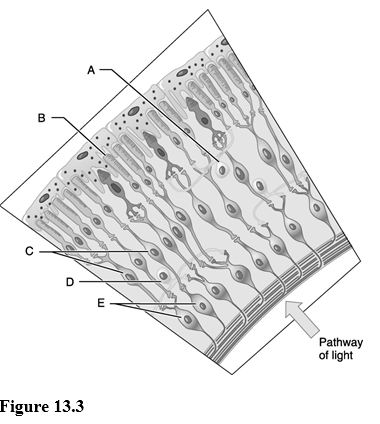Using Figure 13.3, match the following:

1) Ganglion cells.
2) Bipolar cells.
3) Horizontal cell.
4) Amacrine cell.
5) Rod.
1. E
2. C
3. A
4. D
5. B
You might also like to view...
Water is only lost from the body in urine formation.
Answer the following statement true (T) or false (F)
Given two muscles of equal mass, a short, thick muscle and a long, thin muscle, one would expect the short, thick muscle to
A) Contract with a greater force. B) Have its sarcomeres arranged in series rather than parallel. C) Shorten faster and further, but generate less force. D) All of the above
Which type of muscle tissue is multinucleated?
A. Both skeletal and cardiac muscle are correct. B. Cardiac muscle C. Both cardiac and smooth muscle are correct. D. Smooth muscle E. Skeletal muscle
To raise your hand and place it on the shoulder of a person standing in front of you involves ________ of the shoulder.
A. flexion B. adduction C. abduction D. supination E. retraction